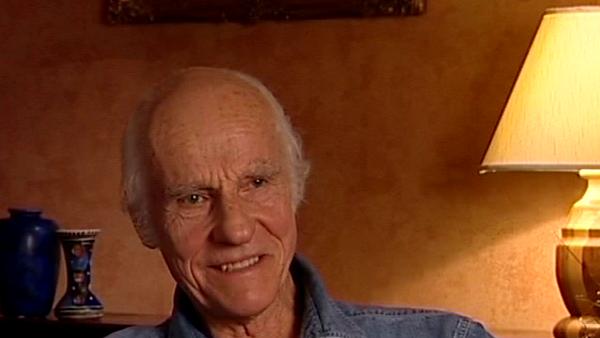NEXT STORY

The way I became more involved in the set-up
RELATED STORIES

NEXT STORY

The way I became more involved in the set-up
RELATED STORIES


|
Views | Duration | |
|---|---|---|---|
| 91. A furore over my permit to shoot Going in Style | 92 | 03:21 | |
| 92. Shooting Going in Style | 48 | 05:38 | |
| 93. The multiplex idea on the set of The Silent Partner | 37 | 05:41 | |
| 94. My only science fiction film: Saturn 3 | 85 | 06:20 | |
| 95. How do you teach cinematography? | 196 | 06:13 | |
| 96. Questioning cinematography techniques | 92 | 04:47 | |
| 97. Different tools and considerations in cinematography | 119 | 06:46 | |
| 98. Pola screens | 55 | 01:49 | |
| 99. Who gets the set-up? | 54 | 02:50 | |
| 100. The way I became more involved in the set-up | 57 | 04:22 |


Billy Williams, London-born cinematographer Billy Williams gained his first two Oscar nominations for the acclaimed “Women in Love” and “On Golden Pond”. His third nomination, which was successful, was for the epic “Gandhi”. He was President of the British Society of Cinematographers, and was awarded the Camera Image Festival’s Lifetime Achievement Award in 2000.
Title: Who gets the set-up?
Listeners: Neil Binney
Neil Binney began working as a 'clapper boy' in 1946 on spin-off films from steam radio such as "Dick Barton". Between 1948-1950 he served as a Royal Air Force photographer. From 1950 he was a Technicolor assistant technician working on films such as John Ford's "Mogambo" (photographed by Freddie Young), Hitchcock's "The Man Who Knew Too Much" (Bob Burke), and Visconti's "Senso" (G.R. Aldo/B. Cracker). As a camera assistant he worked on "Mind Benders", "Billy Liar" and "This Sporting Life". Niel Binney became a camera operator in 1963 and worked with, among others, Jack Cardiff, Fred Tammes and Billy Williams. He was elected associate member of the British Society of Cinematographers in 1981 and his most recent credits include "A Fish Called Wanda" and "Fierce Creatures".
Duration: 2 minutes, 50 seconds
Date story recorded: September 2003
Date story went live: 24 January 2008